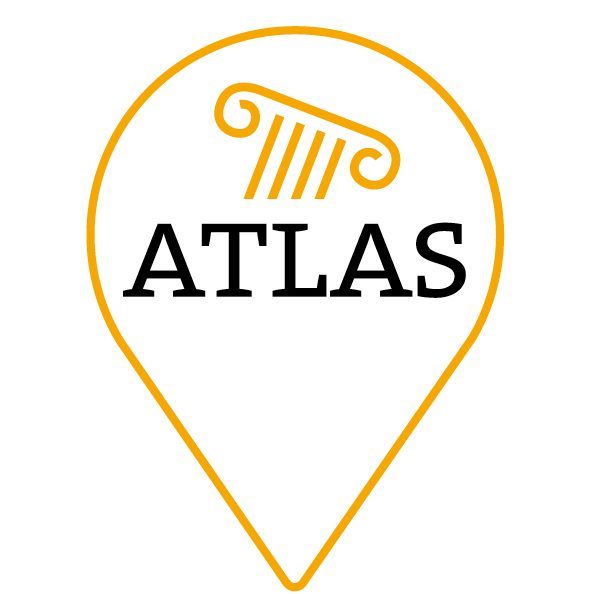Just before the end of 2022 our and RomanIslams director Sabine and our postdoc Pieter took the opportunity to present at the Africa Romana conference (December 16th-18th) in a RomanIslam-ATLAS collaboration. In the summer, the RomanIslam postdoc, and ATLAS member, Stefan Ardeleanu proposed to team up and write an abstract for the Africa Romana conference on the Julio-Claudian period. Even though the theme is a bit far from our beloved Late-Antiquity, we were sure that our earlier work on the Julio-Claudian period would be of use. Hence, we successfully wrote an abstract to study the spread of the imperial Cult in Africa in the Julio-Claudian period:
L’émergence du culte impérial en Afrique du Nord : matérialité, acteurs, contextes spatiaux
From the onset it was clear that Sabine and Pieter would present in Sbeitla and that this would be done in French. Therefore, we had to prepare an article to present in December. Stefan Ardeleanu as the expert on North Africa took the lead writing the paper, Sabine and Pieter added their perspectives along the process. In the end, we had a paper containing the archaeological, epigraphic and numismatic evidence, brought together in a few maps. On December 15th our trip to Sbeitla started. Admittedly, we made it a bit more difficult than needed… For our own convenience, we took a flight arriving late afternoon in Tunis. However, one does not simply walk to Sbeitla, or for that matter take public transport. Luckily, our colleagues from the INP organised a ride to Sbeitla for us. After a long ride, we arrived just before midnight in the hotel in Sbeitla.
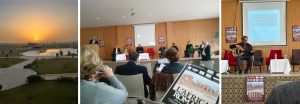
After a good night and delicious breakfast, we were refreshed and excited for the conference. This took place in the same hotel so it was easy moving around, as you will see. The opening itself took the whole first part of the morning. After the coffee break (more delicious Tunesian sweets!), we thought the first presentation was planned. Not at Africa Romana! We were treated to the music of oud player Mehrez Abidi, who had written some new pieces combining Sardinian and Tunisian folk music styles. After this musical intermezzo or maybe closing piece of the opening, the first presentations started. After the first few presentations, we already had a good idea that the conference holds loads of new research (epigraphy!) and ideas. Even though the Julio-Claudian focus was chronologically far from ours, several the presentations gave us new insights in the early development of the provinces and its relation to urbanism in Late Antiquity.
The long-time reserved for lunch gave Sabine and Pieter the opportunity to sit together and try-out our presentation. As we did not want to disturb the other participants we went to our adjacent rooms and realised, we could work from our own balconies with a view over Sufetula, Roman Sbeitla.

In time for the presentation of our ATLAS member, Rubén, we finished and returned to the conference room. The whole day gave us ample time to reconnect with old friends and make some new ones. The dinner added a culinary tone to more opportunities for discussions and talks. The fact that researchers from Tunisia, Algeria, Italy, France, Spain and Germany (certainly countries have been forgotten) get together makes it an interesting venue to exchange ideas bridging the different discourses, often delimited by national or linguistic boundaries. The clearest boundary is linguistic; with each meeting, we first need to find out what language is common between the members. Unsurprisingly most often we find that French is used, hence our presentation in French. However, we have been speaking more Spanish than we would have thought before going to Sbeitla.
The next morning we were all excited and ready to go! Early at breakfast and off to get our French texts printed. We went to the host of Sardinian students assisting at the conference in the small admin room. As if being in a sketch we had to state what we wanted at student number one sitting opposite the table with the printer. The student then sent us to another table just a few steps further, but also farther from the printer. After stating our purpose, we were guided to the printer. With the texts still warm from the printer, we went to the sala piccola (we get it, Africa Romana first timers don’t go to the grande sala 😉 ). Just after the coffee break, it was our turn to present. Luckily, several people touched upon the imperial cult in their talks, leading to a good discussion on this topic at the end of the session. Clearly, our presentation and ideas had struck a chord. We look forward to publishing our paper in the proceedings.
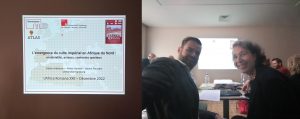
As we were so close to Sufetula and a visit was not planned, we had to take our chance. With a small group, we left the lunch break early to visit the site. Sabine and Pieter, being used to Hispania, were amazed by the conservation of the city. So many buildings still have standing walls or have been reconstructed to show the original construction. The forum of Sufetula with its capitolium and Late Antique fortification are just impressive. Walking around the site, we started looking for the different basilicae and churches we knew were there. Knowing that these buildings are there and that some of them have well-preserved baptisteries is one thing, seeing the amazing quality of the baptisteries is something different. As to be expected, we lost track of time and had to run back to the conference. A nice steward allowed us to jump a fence so we could cut our way by at least half an hour.
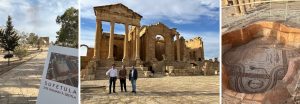
The last day of the conference was the day we had been looking forward to: the visit to Ammaedara. As you might know this is one of our case study cities. Moreover, this case study is not easy to visit; the region close to the Algerian border is known to be unsafe. Nonetheless, the conference organisation organised a visit to the site guided by no one less than François Baratte and Mohamed ben Nejma both are experts of the site. The whole adventure started in the early morning as we got in the bus and started heading for Haïdra. At a certain point we realised there was a small police patrol car in front of our motorcade of cars and tourist bus. All safe and sound we arrived at Ammaedara and saw the guards were all relaxed. Nothing to worry about then.
The visit started with the small museum holding some of the beautiful pieces of Ammaedara. François Baratte started explaining the history of the city and its archaeological excavations. Thereafter the tour of the site started. Unfortunately, we had only one and a half hour to visit this amazing site. We started with the Basilica I, where we could see the funerary slabs in situ on the floor. Moreover, not just a few of them, but loads. You can imagine the epigraphists running around with their cameras playing with light and shadow to get the best pictures. From there we walked towards one of the many eye catchers of the city: the Byzantine fortress. The standing round towers are not byzantine at all but modern additions from another age of war, nonetheless, the remaining standing towers and wall sections are Late Antique and impressive. Inside the citadel, we find two basilica, of which we visited Basilica III. This was a two-storey building adjacent to the outer wall of the citadel. As we were doing a tour of highlights in the limited time, we went to the Monument des auges. This type of monument is found in several African cities, but even today (despite a recent book on the topic) it is not fully understood. We ended with the most famous building of all: the Arch of Septimius Severus. The arch speaks to so many as it is a well-preserved third century arch partially encapsulated by walls to create a Late Antique tower.
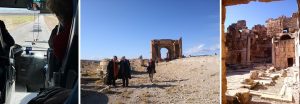
All in awe because of the beauty of Ammaedara we headed back to the hotel. Nevertheless, not without a small detour visiting some traditional handwork shops. After this intermezzo, we returned to the hotel for our last lunch. As we planned to fly back early morning on Monday, we had to leave for Tunis Sunday afternoon.
In a few months, we expect our paper to be published open access!
